Yelenev Cave was named by Nicolai Ovodov in recognition of Alexei S. Yelenev’s early-twentieth-century explorations of more than 50 caves in the vicinity of Krasnoyarsk. Yelenev was a mathematics teacher before the Russian Revolution of 1919. Sometime afterwards he moved east to Irkutsk, where his notes, papers, and journals were lost. Yelenev was not alone in exploring Yenisei River caves. A man named Proskuryakov (1889, 1890, 1893) was also doing this in the late 1800s. Following Ovodov’s initial testing, the cave was extensively excavated for 12 seasons in the 1970s and 1980s under the directorship of archaeologist Nicolai P. Makarov. Ovodov assisted him, as did various staff members of the Krasnoyarsk Regional Museum, and numerous highschool children on summer vacation. V. P. Cheka et al. conducted studies at Yelenev Cave to help reconstruct the regional environment in the late Pleistocene and early Holocene. O. V. Andrenko has prepared an article on the paleoecology of Yelenev Cave, and has also identified the avian remains. Further environmental reconstruction was developed by the principle investigators (Ovodov and Martynovich 1994, 1999). In August 2000 a day-trip was arranged by Ovodov to visit the cave. He was aided by Valery Gorchakovsky, who owned a dascha 300m or so fTom the cave (Figs. 3.199-3.201). The party consisted of the present three authors and Elaina Popkova. Yelenev Cave is an 8 m high, 4 m wide, and 23 m deep remnant of an ancient underground water-formed grotto, now located 17 m above the present level of the Yenisei River, near the summit of a steep limestone cliffthat rises nearly vertically from the river’s edge. The river here runs through a wide canyon draped with taiga forest that is dramatically broken by stretches of bare pillar-shaped left-bank vertical canyon walls. The south-facing cave is situated 20 km up-river from Krasnoyarsk and 30 km down-river fTom the Krasnoyarsk hydroelectric dam (Figs. 3.202-3.205). The cave’s coordinates are 55°58' N, 92°29' E. Due to the near-vertical cliff face, Yelenev Cave is most safely reached by hiking up from the river at a less abrupt down-stream boat-landing, and on reaching the summit above the cave, lowering oneself by rope down to the entrance. The cave is one of at least five that Ovodov has explored in this stretch of the river between the city and the dam. Before the construction of the dam, the cold, swift-flowing Yenisei River would freeze over in the winter. Now it forms an aquatic year-round north-south barrier to all except power boat operators. Like many other limestone grottos in southern Siberia, the low level of light,
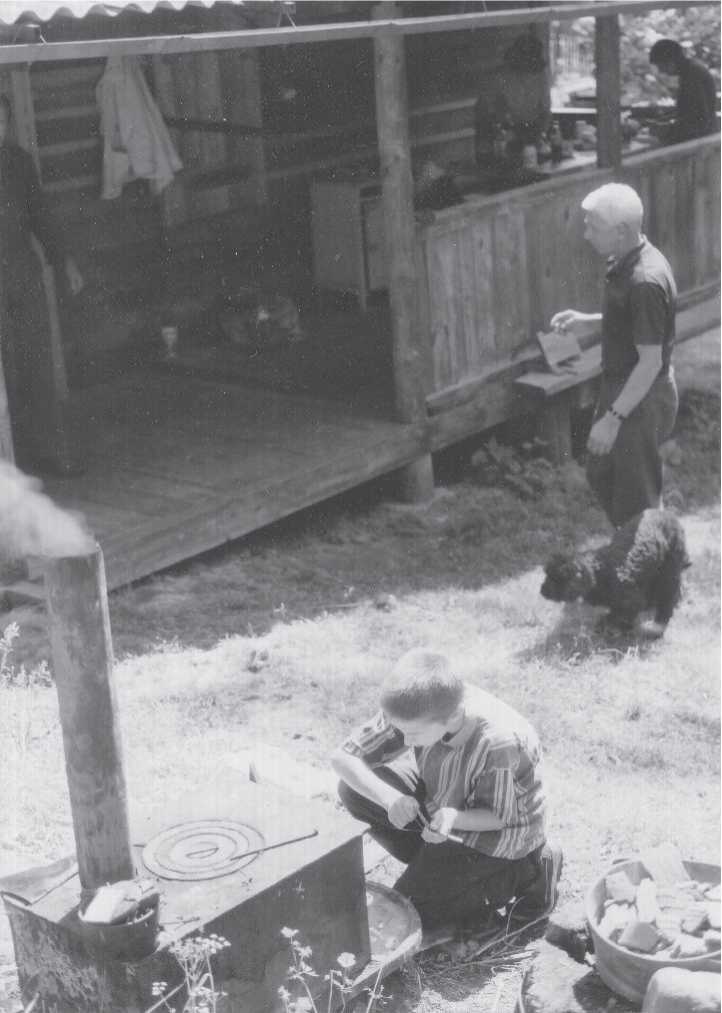
Fig. 3.199 Odyssey. Yelenev Cave. Our day trip to this cave began in Krasnoyarsk, where we boarded a 60-passenger hydroplane river boat that provides travel service up and down the Yenisei River. We disembarked 35 km upriver at a small left-bank community of dacha cabins and vegetable gardens, and walked up a steep road to the dacha belonging to Valery Gorchakovsky, a friend of Nicolai Ovodov, whom he got to know when excavating Yelenev Cave. There, we had lunch before hiking on to the cave. Son Dmitry is shown starting a fire in the outdoor stove to heat water for tea. Next to Dmitry is a large tub full of Neolithic pottery sherds that were found during several seasons of dacha use. Ovodov and his dog Charlie look on (CGT neg. Yelenev 7-14-00:12).

Fig. 3.200 Odyssey. Yelenev Cave. Sherd types suggest this riverside locality has been occupied since
Earliest Neolithic times. The sherds and stone artifacts were picked up over the years while building the cabin, fences, and working the garden plot (CGT neg. Yelenev 7-14-00:11).
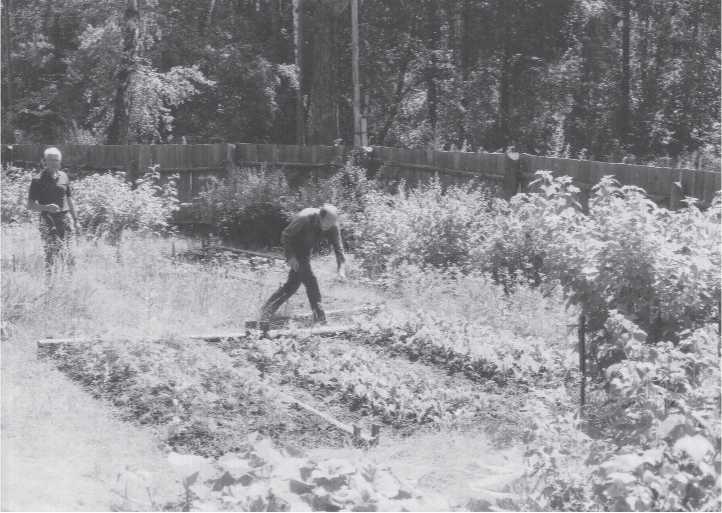
Fig. 3.201 Odyssey. Yelenev Cave. Valery Gorchakovsky picks some fTesh onions and lettuce from his garden for our lunch while Ovodov looks on (CGT neg. Yelenev 7-14-00:13).
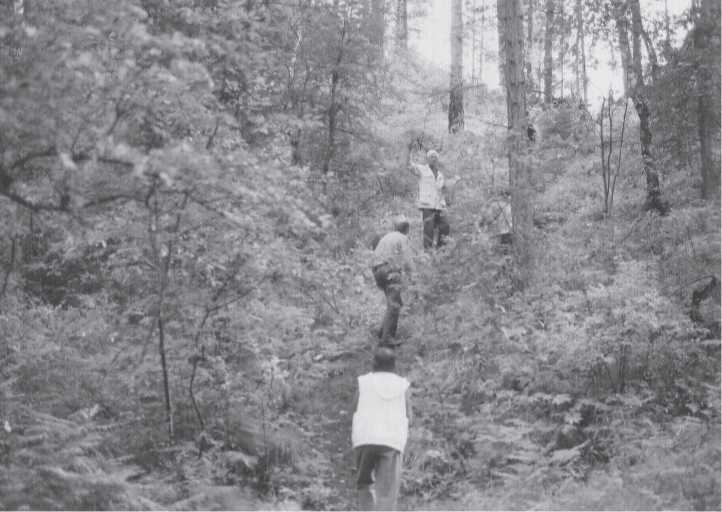
Fig. 3.202 Odyssey. Yelenev Cave, trail to the cave. After lunch Ovodov leads the way to the summit of the high bluff overlooking the Yenisei River. It is easier to reach the cave by descending fTom the cliff above it than trying to reach it fTom below (CGT neg. Yelenev 7-14-00:14).
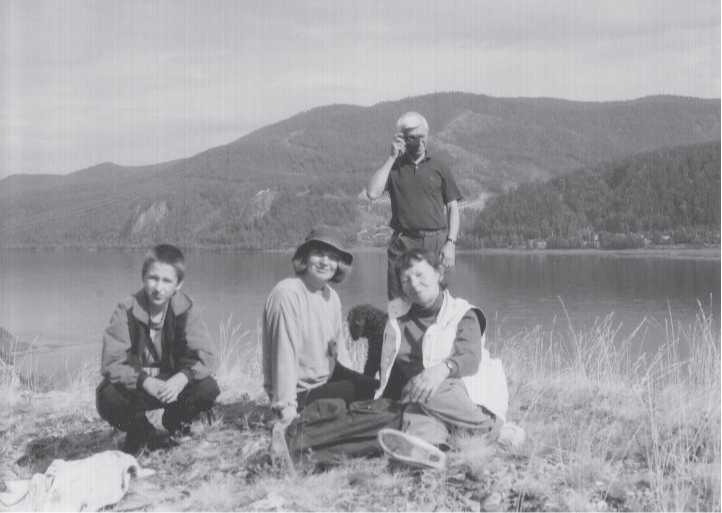
Fig. 3.203 Odyssey. Yelenev Cave, view of the Yenisei River right bank from the cliff summit above the cave.
Power lines across the river come from the hydroelectric dam up-river to the right. Left to right: Dmitry Gorchakovsky, Elaine Popkova, Olga Pavlova, Nicolai Ovodov (standing) (CGT neg. Yelenev 7-14-00:15).
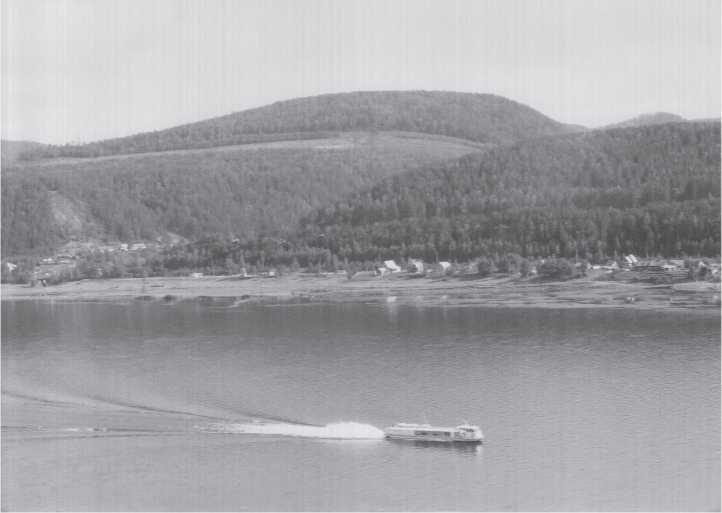
Fig. 3.204 Odyssey. Yelenev Cave. Looking down at the hydroplane river boat that maintains a frequent schedule. In this view from the cliff top the vessel is proceeding further up-river. On the flatter riverside opposite Yelenev Cave, numerous dachas have been erected above the high-water level of the river that varies depending on electricity demand in and around Krasnoyarsk, including the regional section of the Trans-Siberian electrified railroad (CGT neg. Yelenev 7-14-00:19).
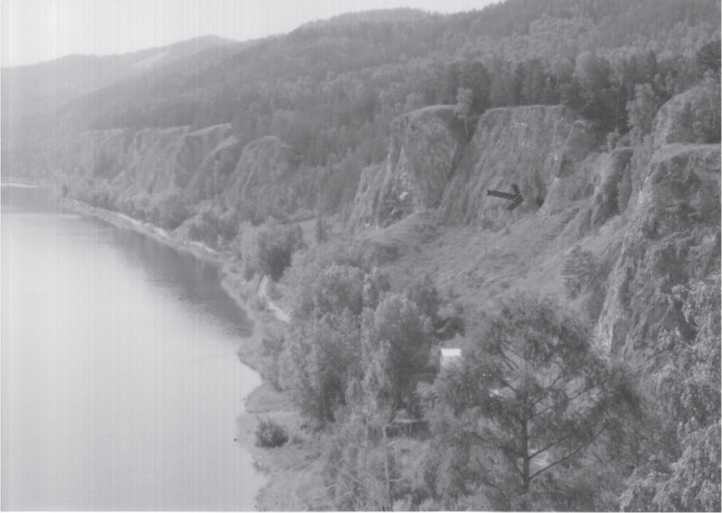
Fig. 3.205 Odyssey. Yelenev Cave. The arrow points to the location of the cave. The view is up-river
Through haze that is due to a combination of high humidity and distant forest fire smoke (CGT neg. Yelenev 7-14-00:16).
Except near the entrance, is unfavorable for plant growth, hence there is very little root damage to the osteological remains found in the cave deposits. During our visit the senior author was impressed with how few mosquitoes there were around and at the cave site. Ticks infected with an encephalitis virus are common in the region, presumably carried with the introduction of cattle. Finally, the condition of the cave midden and its contents suggests that Yelenev was generally a dry cave, although it may have been damp in the rainy season.
Twenty-two layers were identified in a total depth of 6.5 m, 2.5 m of which contained human refuse, artifacts, and a small number of disarticulated human bones (Ovodov, personal recollections, visit to Yelenev Cave, July 14,2000). Not all of the faunal remains were saved due to museum storage space limitations. Ribs, vertebrae, and small unidentifiable fragments were discarded and unrecorded. Ovodov feels that the Neolithic hunters began their butchering of game at the kill site, which along with the excavation discards presumably helps explain most of the missing skeletal elements. Because some fetal bone was recovered, Ovodov further feels that Yelenev Cave was occupied by humans mainly during the summer, so some amount of seasonally induced bias needs also to be taken into account. Based on the recovered species of small mammal and bird remains, Ovodov and Martynovich (1994, 1999, 2000) proposed that forest formation started in the late Pleistocene and played an increasingly important ecological role as the tundra-steppe habitat was replaced with taiga due to climatic warming. The early and middle Holocene game animals that the Yelenev residents hunted included hares (39.2%), roe deer (46.23%), maral deer (6.3%), bear (0.8%), elk (0.6%), fox (3.8%), sable (1.6%), and beaver (0.2%). Badger, gray wolf, marmot and musk deer were also recognized, as were 15 species of waterfowl and grouse. Of the 66 500 fish elements recovered, 6500 were of Neolithic age, and 54 500 were of Mesolithic age. Most were eelpouts, followed by grayling, carp, pike, sturgeon, and others.
Artifacts recovered were typical Neolithic objects ranging from bone harpoons and fishing hooks to stone arrow points and knives, some pottery, and a few other classes of objects. Fires had been prepared within the cave as hearths were encountered. Layer 10 was especially rich in ash. However, very few burned bones were found, and those that were more likely than not were burned accidentally. As will be illustrated, roasting of game was certainly rare at Yelenev Cave, if it was practiced at all.
Carbon-14 dates indicate that the main human occupation was Mesolithic and Neolithic - that is, commencing about 9000 years ago. Some 49 carbon-14 dates have been obtained, including a 13 600 BP date related to pre-human paleontological materials. However, no examples of extinct fauna were recovered (Ovodov, personal communication; Vasili’ev et al. 2002:524). Kuzmin and Orlova (1998:18) list ten carbon-14 dates, all based on charcoal, that range from 10 485 BP to 8205 BP.




 World History
World History









